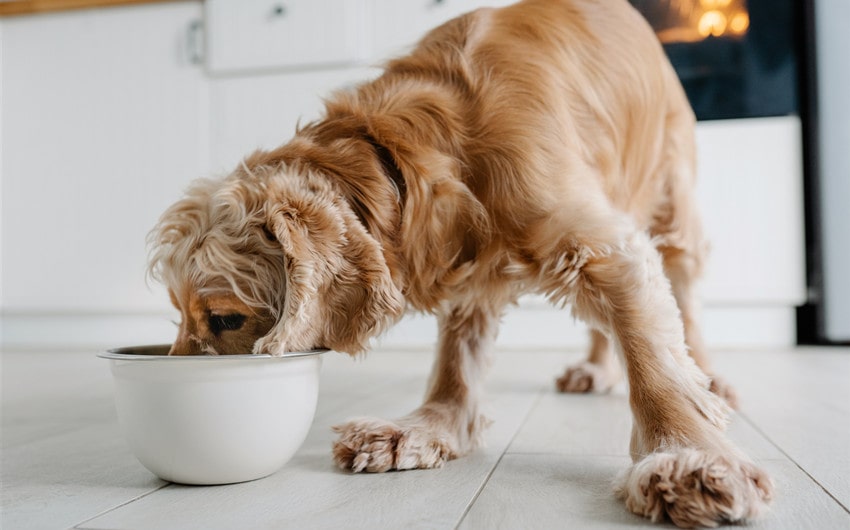Is It Cruel to Feed a Dog Once a Day or Just Misunderstood?
You might wonder if feeding your dog once a day is normal—or if it’s actually neglectful. Maybe you grew up with a once-a-day routine, or maybe you’ve heard different advice from vets, trainers, or dog owners. While opinions vary, the truth comes down to your dog’s age, health, lifestyle, and how that one meal fits into their daily routine. So is it cruel? Not necessarily—but it might not be ideal either.
What Science Says About Feeding Frequency
Scientific research into canine feeding routines continues to evolve. While a few studies have suggested possible health benefits of once-a-day feeding for adult dogs—like potential improvements in longevity, metabolic health, and cognitive function—these findings are still early and far from conclusive. Most veterinarians and animal nutrition experts still recommend feeding adult dogs twice daily to support digestive consistency, energy regulation, and behavioral balance.
Your dog’s digestive system begins to empty around 8 to 10 hours after a meal. Going a full 24 hours between feedings can cause not only discomfort but physical symptoms like stomach gurgling, vomiting bile, and restlessness. Feeding twice a day helps avoid these issues by keeping blood sugar stable and giving your dog regular fuel to burn throughout their day.
Why Some People Only Feed Once a Day
Feeding a dog once daily isn’t always about neglect. In fact, some owners are simply continuing habits they learned growing up, or they follow recommendations from breeders or trainers who raise certain working or sporting breeds. For example, some owners believe one meal reduces the risk of gastric torsion (bloat) in large breeds, particularly if feeding is done after activity rather than before.
Others may feed once daily for convenience, financial reasons, or because their dog seems content and maintains a healthy weight. For dogs with slower metabolisms, minimal daily activity, or obesity risks, one carefully balanced meal may actually help prevent overeating. The key is making sure that one meal meets all nutritional requirements and doesn’t leave your dog uncomfortable or nutritionally deficient over time.
When Once-a-Day Feeding Could Be a Problem
Feeding once a day might seem efficient, but it doesn’t work for every dog. Puppies, for example, need to eat multiple times per day to support their fast growth and energy demands. Their blood sugar can drop quickly, making frequent, nutrient-dense meals essential for development. Senior dogs may also struggle with once-daily feeding due to lower appetite, slower digestion, or medication needs that require food.
Medical conditions like diabetes, gastrointestinal sensitivity, and certain endocrine disorders make once-daily feeding risky. Even for healthy adult dogs, going too long between meals can result in stomach upset, hunger-driven stress, or even food guarding behavior. You might notice your dog vomiting yellow bile, begging constantly, or acting irritable if the meal gap is too long. These are signs that once-a-day feeding isn’t meeting your dog’s physical or emotional needs.
Behavioral Effects of Feeding Once Daily
Food plays a major role in your dog’s emotional regulation. Mealtime isn’t just about calories—it’s part of their daily rhythm. Dogs that eat only once per day may become overly focused on food, especially if they feel underfed or uncertain about the routine. This can lead to increased begging, pacing, anxious anticipation, or food guarding around other pets or people.
In contrast, splitting meals into two servings offers more than just hunger management. It adds structure and predictability to your dog’s day, which can help reduce anxiety. Many dogs feel more secure when they know food is coming regularly. This routine can improve obedience, make training sessions more effective (you’ll have more opportunities for reward-based learning), and even enhance your bond by turning feeding into a consistent point of connection.
How to Decide What’s Best for Your Dog
Deciding how often to feed your dog isn’t just about habit—it’s about observation. Look closely at how your dog responds to their current schedule. Are they thriving or just surviving between meals? Do they act content throughout the day, or do they seem driven by hunger? Are they vomiting bile in the morning, showing signs of food-related stress, or struggling with digestion?
You should also factor in age, activity level, and health status. Puppies and older dogs benefit from multiple small meals. Highly active breeds may need fuel more than once a day to maintain energy levels. Dogs on medication might require food to avoid stomach irritation. Talk to your vet before making changes, and if you switch from one to two meals, do it gradually to help your dog adjust.
Feeding isn’t one-size-fits-all—but it should always be about supporting your dog’s health and comfort, not just simplifying your routine.
So Is It Cruel to Feed a Dog Once a Day?
Feeding your dog once a day isn’t automatically cruel. Some dogs tolerate it well, especially if they’re healthy, low-energy, and eating a complete and satisfying meal. But if that one meal leaves them feeling hungry, stressed, or sick, it’s no longer a neutral choice—it’s a problem.
Cruelty isn’t defined by meal frequency alone. It’s defined by whether your dog’s physical and emotional needs are being met. If you’re thoughtful, observant, and responsive to how your dog reacts, you can adjust your feeding schedule to support their best life. For most dogs, that means two meals a day—not just for health, but for comfort, stability, and peace of mind.




